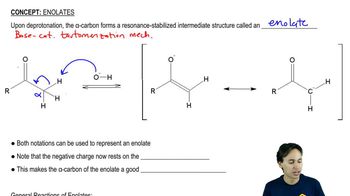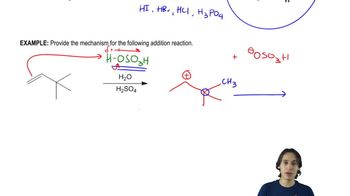Textbook Question
Vinyl alcohols are generally unstable, quickly isomerizing to carbonyl compounds. Propose mechanisms for the following isomerizations.
(a)
 Verified step by step guidance
Verified step by step guidance Verified video answer for a similar problem:
Verified video answer for a similar problem:



 1:51m
1:51mMaster Unusual Acidity of the Alpha Carbon with a bite sized video explanation from Johnny
Start learning